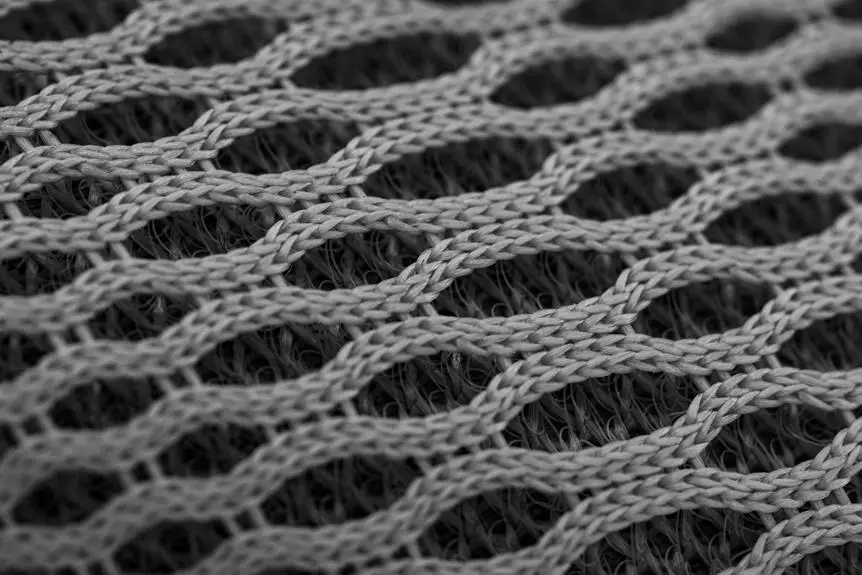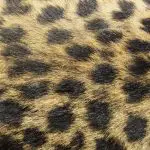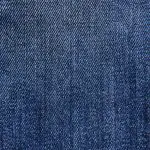When you're working with fabric glue, it's easy to make some common mistakes that can derail your project. You might overuse the adhesive, thinking more is better, or overlook the importance of fabric compatibility, which can lead to disappointing results. Ignoring surface preparation or skimping on drying times can also be detrimental. If you haven't tested the glue on a sample first, you could face unwanted surprises. Understanding these pitfalls can save you time and frustration, but there's more to consider before you start your next project.
Table of Contents
Key Takeaways
- Overusing fabric glue creates stiffness and mess, so apply a thin, even layer for better control and finish.
- Ignoring fabric compatibility can lead to poor adhesion; always check manufacturer guidelines for suitable glue types.
- Skipping surface preparation, such as cleaning and pre-washing, can hinder glue performance and weaken bonds.
- Neglecting recommended drying times can result in weak bonds; allow sufficient time for the glue to set properly.
Overusing Fabric Glue
Overusing fabric glue can lead to a stiff and unappealing finish on your projects. When you apply too much glue, it seeps through the fabric, creating an unsightly mess. This excess glue not only affects the appearance but also compromises the flexibility of your fabric, making it difficult to work with. You may find your edges curling or your seams puckering, which can ruin your hard work.
To avoid this issue, it's essential to use just the right amount of glue. Start with a thin, even layer, and spread it with a brush or your fingers for better control. If you're unsure, it's better to apply a little and then reapply if necessary.
This method ensures you maintain the fabric's natural drape and softness, giving your project a professional finish.
Ignoring Fabric Compatibility
How can you expect your project to turn out well if you ignore fabric compatibility when using glue? Choosing the right fabric glue isn't just about grabbing any bottle off the shelf; it's crucial to consider the materials you're working with. Different fabrics have unique properties, and not all glues adhere well to every type. For instance, a glue that works great on cotton mightn't hold up on slippery satin or stretchy spandex.
When you fail to match your glue with the fabric, you risk your project falling apart at the seams. This can lead to frustrating situations, like redoing hours of work or, worse, ruining your fabric altogether. Always check the manufacturer's guidelines to ensure compatibility. Some glues are specifically formulated for certain materials, while others are more versatile.
Additionally, consider the weight and texture of the fabrics involved. Heavy fabrics may require a more robust adhesive, while lighter ones might need a gentler touch. By taking the time to assess fabric compatibility, you'll save yourself time, effort, and disappointment, ensuring your project turns out beautifully and lasts.
Skipping Surface Preparation
One crucial step often overlooked in fabric glue projects is proper surface preparation, which can significantly impact adhesion. If you skip this step, you're setting yourself up for disappointment. To ensure a strong bond, start by cleaning the surfaces you'll be working with. Dust, dirt, or grease can prevent the glue from sticking effectively. A simple wipe with a damp cloth can make a world of difference.
Next, consider the texture of the materials. If you're gluing two different fabrics, roughen the surface of the less porous material slightly. This creates more area for the glue to grab onto, improving adhesion. Pre-washing your fabric can also help, as it removes any finishes or chemicals that might interfere with the glue.
Don't forget to dry the surfaces thoroughly before applying fabric glue. Moisture can weaken the bond and lead to unsatisfactory results. Taking these preparation steps might seem tedious, but they'll save you time and frustration in the long run.
Neglecting Drying Times
Neglecting drying times can lead to weak bonds and messy projects, so it's essential to follow the manufacturer's recommendations for optimal results. When you rush this step, you risk compromising the integrity of your work. Fabric glue needs time to set and cure properly, and skipping this crucial phase can result in seams that come apart or fabric that peels away.
Different types of fabric glue have varying drying times, and factors like humidity and temperature can influence how quickly the glue sets. You might think you can just move on to the next step, but doing so can create frustration later on. Imagine finishing your project only to discover that parts of it didn't adhere properly because you didn't allow enough time for the glue to dry.
To avoid this pitfall, set a timer or create a dedicated workspace where you can leave your project undisturbed. Give your fabric glue the time it needs to bond effectively, ensuring your hard work pays off in the long run. Remember, patience is key in crafting, and allowing proper drying time will lead to a more professional-looking finish.
Not Testing Before Application
Skipping the test application can lead to unexpected results that ruin your project. You might think your fabric glue will work perfectly, but without a test, you could be in for a surprise. Different fabrics and glues interact in unique ways, and what works for one combination may not work for another.
Here are a few reasons why testing is vital:
- Adhesion Strength: You need to know how well the glue holds on your specific materials. A quick test can save you from a weak bond.
- Drying Time: Different fabrics absorb moisture differently. Testing helps you understand how long you need to wait before handling your project.
Frequently Asked Questions
Can Fabric Glue Be Washed After It Dries?
Yes, fabric glue can be washed after it dries, but its durability depends on the brand and fabric. Always check the manufacturer's instructions, and consider testing on a small area first to ensure desired results.
Is Fabric Glue Safe for Children's Projects?
Yes, fabric glue's generally safe for children's projects, but you should check the label for non-toxic certification. Always supervise kids during use, ensuring they apply it correctly and avoid skin contact for safety.
How Do I Remove Fabric Glue From My Skin?
To remove fabric glue from your skin, gently rub the area with warm soapy water. If that doesn't work, try using rubbing alcohol or a commercial adhesive remover, then wash thoroughly to prevent irritation.
Can I Use Fabric Glue on Leather Materials?
You can use fabric glue on leather, but it's best to choose a strong adhesive specifically designed for leather. Test a small area first to ensure it adheres well and doesn't damage the material.
What Should I Do if Fabric Glue Doesn't Hold?
If your fabric glue isn't holding, try pressing the materials together firmly and allowing more time to dry. You might also need to clean the surfaces or choose a stronger adhesive suitable for your project.
- How Does Ring Spun Cotton Affect Garment Fit and Shape Retention? - August 13, 2024
- What Are the Challenges in Producing Ring Spun Cotton? - August 13, 2024
- Is Ring Spun Cotton Suitable for Plus-Size Clothing? - August 13, 2024






